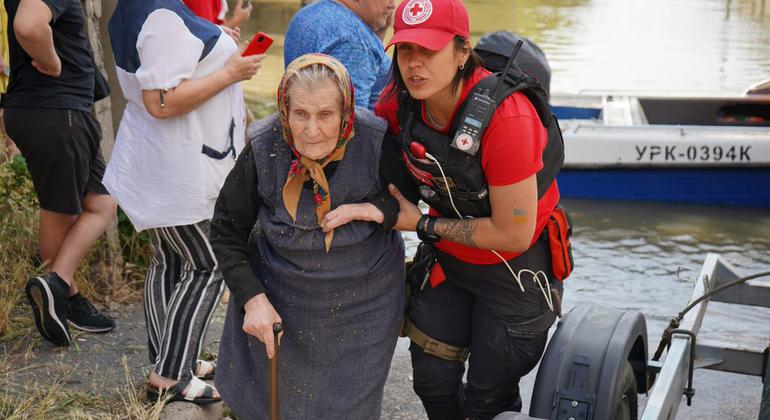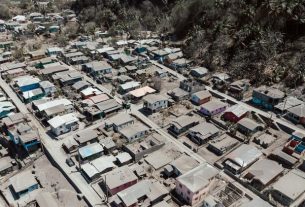Denise Brown, Resident and Humanitarian Coordinator, offered reassurance to Dmytro Kuleba that UN agencies and other humanitarian partners have been delivering water, food and cash to those displaced or suffering the impact of the dam breach, and collapse of the crucial hydroelectric plant in the southeast region near the city of Kherson.
Expanding support
“Plans are now being made, also in partnership with oblast authorities, to reach the wider flood affected areas as soon as possible, once the military deems it safe, given the risks as fast moving water shifts mines and unexploded ordinance to areas previously assures as cleared”, said a press release from her office.
The meeting came off the back of widely reported and critical comments directed towards the UN and other major humanitarian organisations operating in Ukraine, by President Volodymyr Zelenskyy on Wednesday, who said the initial relief effort had been insufficient.
“The UN is committed to reaching all Ukrainians in need, on both sides of the riverbank”, said the UN Ukraine release, referring to the Dnipro River which serves as the frontline between Russian occupiers on the left bank, and Ukrainian Government held territory opposite.
Repeated requests for aid access
The UN has “repeatedly requested access and safety guarantees”, especially from Russian commanders currently in control of the areas which are reportedly suffering the worst impact of the flooding.
“We have not received that access, nor the necessary safety guarantees for humanitarian staff and the people they would help there”, the statement continued.
In a tweet issued on Thursday, UN aid coordination office in Ukraine, OCHA, highlighted that food for 18,000 people had been supplied by the UN and partners; more than 100,000 bottles of water, cash for 5,000 people in need; thousands of hygiene kits, including special supplies for older persons; and mobile health and psychosocial support.
Stranded people are being evacuated from neighbourhoods due to the massive flooding caused by the destruction of the Kakhovka Dam in southern Ukraine.
Zaporizhzhya nuclear plant concerns remain: IAEA
Europe’s largest nuclear plant at Zaporizhzhya, located relatively close to the destroyed dam site and the vast reservoir which is now emptying into the river, relies on water from there for its cooling system.
The UN atomic energy agency, IAEA, said there was still cause for concern that the water level for its reserves could fall to such a level, that it could no longer be pumped to the site to keep reactors cool.
“As the full extent of the dam’s damage remains unknown, it is not possible to predict if and when this might happen. If the current drop rate were to continue, however, the 12.7 metre level could be reached within the next two days”, said IAEA in a statement.
Building reserves
Preparing for such a possibility, the agency said it was “continuously replenishing its water reserves – including the large cooling pond next to the plant as well as its smaller sprinkler cooling ponds and the adjacent channels – by fully utilizing the water of the Kakhovka reservoir while this still remains possible.”
“It is essential that the integrity of both the ZNPP cooling pond and of the ZTPP discharge channel is maintained. This is critical so the plant has sufficient water to provide essential cooling to the site for the months ahead,” Director General Rafael Mariano Grossi said.
He plans to travel to the plant next week to assess the situation there following the damage to the dam and to monitor compliance with the five basic principles for protecting the ZNPP that he presented to the United Nations Security Council on 30 May.
He also pledged to strengthen the IAEA’s presence at the site, which is currently Russian occupied, but locally staffed, replacing the current team with a larger group travelling with him across the frontline.

UNICEF is providing humanitarian aid to passengers arriving in Mykolaiv on the first evacuation train from Kherson, Ukraine.



